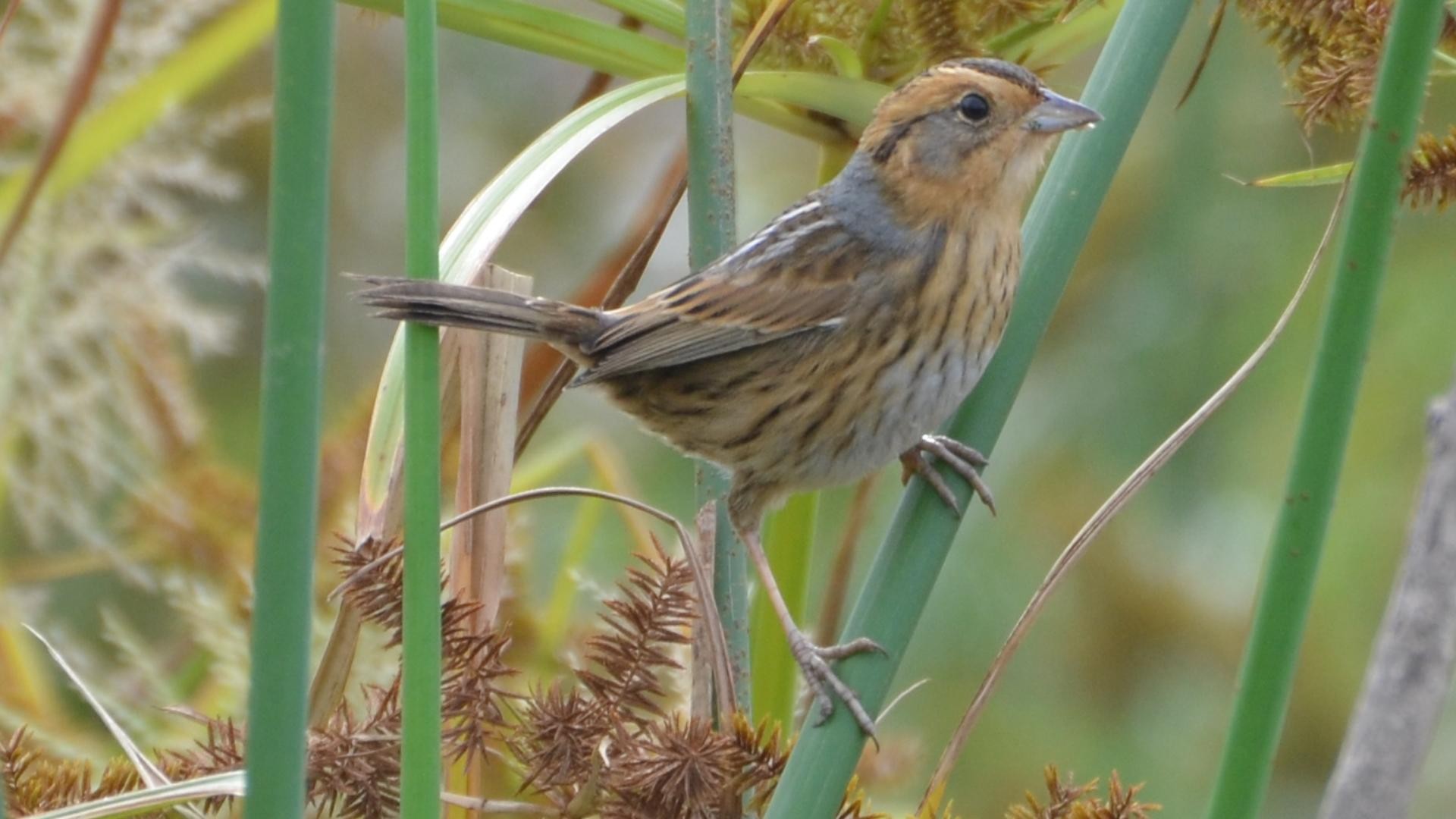Nelson's Sparrow
A species of Grassland sparrows Scientific name : Ammospiza nelsoni Genus : Grassland sparrows
Nelson's Sparrow, A species of Grassland sparrows
Botanical name: Ammospiza nelsoni
Genus: Grassland sparrows
Content
Description General Info
Description
Measurements: Length: 4.3-5.1 in (11-13 cm) Weight: 0.6-0.7 oz (17-21 g) Wingspan: 6.5-7.9 in (16.5-20 cm) Adults have brownish upperparts with gray on the crown and nape, a cream-colored breast with light or indistinct streaking and a white throat and belly; they have an orange face with gray cheeks and a short pointed tail. Their breeding habitat is marshes on the Atlantic coast of Canada and Maine, central Canada, (the Canadian Prairies region and a coastal strip on the south of Hudson Bay), and the north central United States. The nest is an open cup attached to vegetation and close to the ground. Due to their proximity to the ground, they are vulnerable to habitat loss and are at risk due to rising sea levels. Males compete for females but do not defend territories; they sometimes help feed the young. Mating is largely promiscuous by both sexes; multiple paternity in a nest is common. These birds migrate to the southeastern coasts of the United States. They forage on the ground or in marsh vegetation, sometimes probing in mud and eat mainly insects, aquatic invertebrates and seeds. Their call is a raspy trill, almost a mechanical sound. It may be given in flight during the nesting season. The sound has been likened to a drop of water hitting a hot fry pan. 
Size
14 cm
Life Expectancy
6-10 years
Nest Placement
Ground
Clutch Size
2 - 6 eggs
Incubation Period
1 - 2 broods
Nestling Period
8 - 11 days
Feeding Habits
Nelson's Sparrow primarily consumes insects, arachnids, crustaceans, and seeds. They feed on the ground or while perched, targeting a variety of prey such as beetles, grasshoppers, moths, and spiders, as well as seeds from plants like wild rice and cordgrass. Their diet shifts to mainly seeds in winter.
Habitat
Nelson's Sparrow typically inhabits diverse wetland ecosystems, ranging from the freshwater marshes of the interior continent with lush vegetation including cattails, rushes, and sedges, to the sedge bogs near Hudson Bay characterized by reeds, blue joint, and dwarf birch. At higher altitudes closer to the Atlantic Coast of Canada and New England, nelson's Sparrow favors tidal wetlands with salt-adapted flora but may also resort to agricultural fields and river-adjacent wet grasslands. Migrants seek similar wetland habitats, and during winter, nelson's Sparrow can be found in coastal salt and brackish marshes.
Nest Behavior
The female nelson's Sparrow selects the nesting site and is primarily responsible for building, though males may contribute materials. Nest building occurs secretively via pathways beneath cordgrass. Sometimes, multiple nests are built, but only one is used for laying eggs, which are placed in either cup-shaped or domed structures. Nelson's Sparrow's exhibit secretive behavior when approaching their nests.
Nest Characteristics
Nelson's Sparrow's nests are typically located in grass, elevated 2-10 inches off the ground, using surrounding vegetation for support. These nests might be underpinned by a 'thatch' of bent-over cordgrass in saltmarshes. Constructed mainly from coarse, dead grass and lined with finer grasses, their dimensions average 2.6 inches in height and 3.7 inches in diameter, with an inner cup about 2.5 inches wide and 1.9 inches deep.
Dite type
Insectivorous
General Info
Feeding Habits
Bird food type
Behavior
Nelson's Sparrow engage in foraging and resting primarily on or closely above the ground, with short flights characterizing their typical movement. Males display conspicuously, executing long, swift flights over marsh vegetation, and not only perch but also vocalize from concealed spots, often during nightly periods. Male nelson's Sparrow show no territoriality but will vigorously contest and pursue other males in the presence of females, signifying a male-dominance polygyny breeding system. They are uninvolved in nesting activities, and post-breeding behavior includes flocking and feeding on seeds, with a distinct preference for higher marsh zones.
Scientific Classification
Phylum
Chordates Class
Birds Order
Perching birds Family
New world sparrows Genus
Grassland sparrows Species
Nelson's Sparrow 